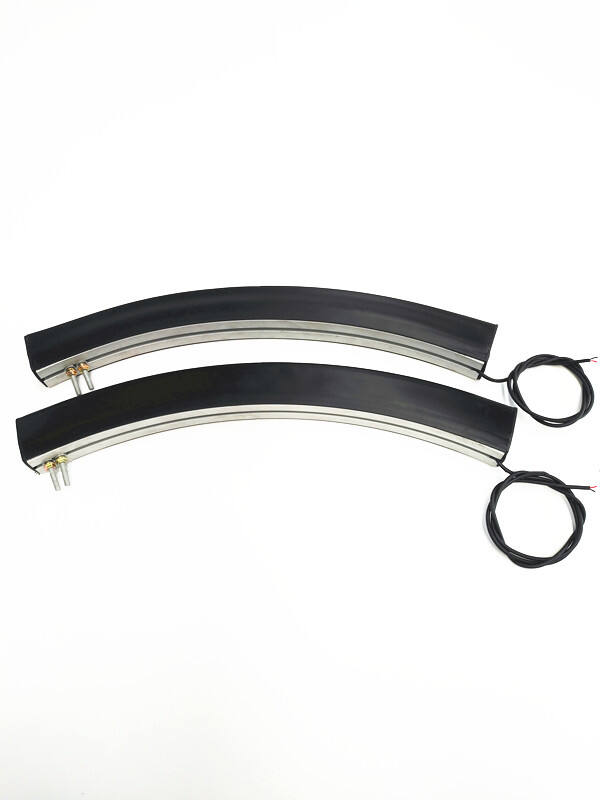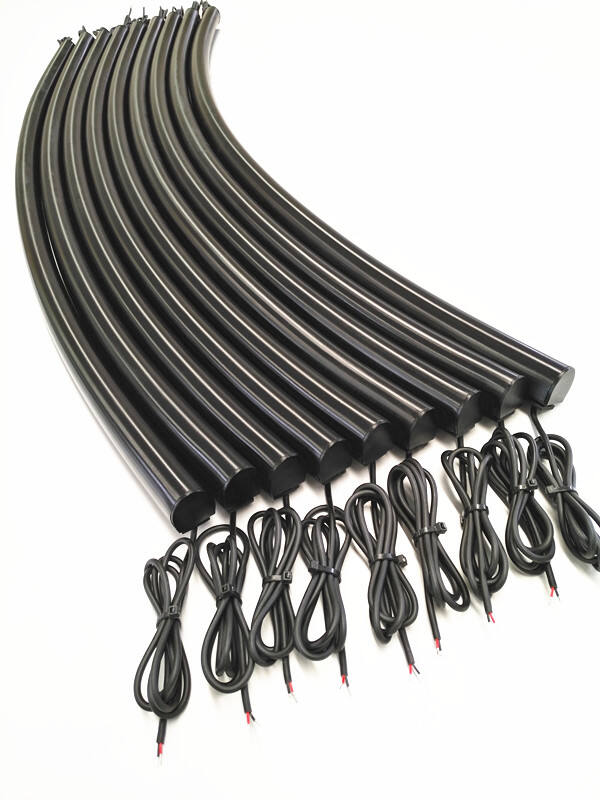Förstå de grundläggande mekanikerna i säkerhetskantsskyddssystem
Safety edge switches representerar en avgörande framsteg inom industriell och kommersiell säkerhetsteknik och fungerar som avgörande skydd i automatiserade system och maskiner. Dessa sofistikerade enheter fungerar enligt en anmärkningsvärt effektiv men enkel princip genom att omvandla mekaniskt tryck till elektriska signaler som utlöser omedelbara säkerhetsåtgärder. I modern tillverkning och automatiserade miljöer har säkerhetskantbrytare blivit oumbärliga komponenter som skyddar både utrustning och personal från potentiella risker.
Integrationen av säkerhetskantbrytare i olika tillämpningar har revolutionerat hur vi arbetar med maskinskydd och zonskydd. Dessa enheter skapar en osynlig sköld som reagerar omedelbart vid beröring, vilket säkerställer driftsäkerhet utan att kompromissa med effektiviteten. När vi fördjupar oss i deras funktionsprinciper kommer vi att avslöja de intrikata mekanismer som gör dessa säkerhetslösningar så pålitliga och effektiva.
Kärnkomponenter och driftsmekanism
Väsentliga delar av en Säkerhetskant Switch
I varje säkerhetskantsbrytare finns ett noggrant konstruerat system av komponenter som arbetar i harmoni. Den yttre lagret består av en flexibel gummiprofil eller polymerprofil som innehåller de interna detekterande elementen. Inuti denna skyddande kapsling finns ledande element – vanligtvis två metallband eller ledande gummiytor – separerade av en luftgap eller speciellt isoleringsmaterial.
Styrenheten fungerar som systemets hjärna och övervakar kontinuerligt det elektriska tillståndet hos detekterande element. Stödkomponenter inkluderar fästesken, ändkapslar och anslutningskablar som säkerställer korrekt installation och pålitlig funktion. Varje komponent är utformad med hållbarhet i åtanke och kan tåla upprepade kompressioner och miljöpåfrestningar.
Aktiveringsprocess och signalöverföring
När yttre tryck appliceras på säkerhetskantsbrytaren deformeras den flexibla yttre profilen, vilket tvingar de ledande elementen att komma i kontakt. Denna kontakt skapar en sluten eller avbruten elektrisk krets, beroende på den specifika designfilosofin – normalt öppen (NO) eller normalt stängd (NC). Styrenheten upptäcker omedelbart denna tillståndsändring och utlöser den förbestämda säkerhetsåtgärden.
Signalöverföringsprocessen sker inom millisekunder, vilket säkerställer snabb respons vid potentiella faror. Moderna säkerhetskantsbrytare innehåller ofta redundanta kretsar och sofistikerade övervakningssystem för att förhindra felaktiga utlösningar samtidigt som driftsäkerheten bibehålls. Den här tvåkanalsmetoden förbättrar systemets totala säkerhetsintegritetsnivå avsevärt.
Implementering över olika Tillämpningar
Skydd för industriell maskineri
I industriella miljöer används säkerhetskantbrytare omfattande på automatiserade maskiner, robotsystem och produktionslinjer. De installeras ofta på rörliga delar, såsom automatiska dörrar, lyftplattformar och transportbältesystem. Denna säkerhetsutrustnings flexibilitet gör att den kan anpassas till olika former och storlekar, vilket ger omfattande skydd längs potentiellt farliga kanter och ytor.
Tillverkningsanläggningar använder säkerhetskantbrytare för att skapa skyddshinder runt farliga områden. Dessa tillämpningar hjälper företag att följa arbetsmiljöregler samtidigt som de upprätthåller optimal produktionseffektivitet. Möjligheten att anpassa känslighet och svarsparametrar gör att dessa enheter kan anpassas till många olika industriella krav.

Kommersiella och offentliga utrymmens tillämpningar
Utöver industriella miljöer spelar säkerhetskantsbrytare en viktig roll i kommersiella och offentliga utrymmen. Automatiska dörrar i shoppingcenter, sjukhus och kontorsbyggnader är beroende av dessa enheter för att förhindra oavsiktlig stängning över människor eller föremål. Offentliga transportsystem integrerar säkerhetskanter på tågdörrar och perrongportar för att säkerställa passagerarsäkerhet vid instigning och urstigning.
Säkerhetskantsbrytares mångsidighet sträcker sig till parkeringssystem, där de skyddar både fordon och fotgängare från automatiska grindarbeten. Deras väderbeständiga egenskaper och tillförlitliga prestanda gör dem idealiska för utomhusinstallationer och bibehåller funktionen under varierande miljöförhållanden.
Avancerade funktioner och teknikintegration
Smarta övervakningsfunktioner
Moderna säkerhetskantbrytare innehåller sofistikerade övervakningssystem som kontinuerligt bedömer driftstatus. Dessa smarta funktioner inkluderar självdiagnostiska kapaciteter som kan upptäcka potentiella fel innan de blir kritiska problem. Verklig tidsovervakning möjliggör omedelbar avisering om eventuella systemavvikelser, vilket gör det möjligt att utföra proaktiv underhåll och minska driftstopp.
Integration med byggnadsautomationssystem och industriella styrsystem har förbättrat funktionaliteten hos säkerhetskantbrytare. Digitala kommunikationsprotokoll möjliggör detaljerad statusrapportering och fjärrövervakning, vilket ger operatörer omfattande överblick över prestandan hos säkerhetssystem i hela anläggningar.
Förbättrad hållbarhet och miljöbeständighet
Tillverkare har utvecklat avancerade material och konstruktionsmetoder för att förbättra slitligheten hos säkerhetskantbrytare. Moderna enheter har förbättrad resistens mot UV-strålning, extrema temperaturer och hårda kemikalier. Denna utveckling inom materialteknik har resulterat i längre livslängd och mer pålitlig funktion under svåra förhållanden.
Särskilda beläggningar och tätningsdesign skyddar interna komponenter från fukt, damm och andra miljöföroreningar. Dessa förbättringar har utvidgat användningsområdet för säkerhetskantbrytare, vilket gör dem lämpliga för användning i utomhusmiljöer, rengöringszoner och andra krävande platser.
Installations- och underhållshänsyn
Riktig montering och konfiguration
För att lyckas med implementeringen av säkerhetskantbrytare krävs korrekt installation. Monteringsytor måste vara rena och ordentligt förberedda för att säkerställa fast fästning. Placeringen av brytaren kräver noggrann övervägning av infallsvinklar och potentiella påverkansscenarier för att ge optimal skyddstäckning.
Konfigurationsinställningar, inklusive känslighetsnivåer och responstider, måste noggrant justeras för att matcha specifika applikationskrav. Denna process innebär ofta tester under olika förhållanden för att verifiera korrekt funktion och eliminera potentiella felaktiga utlösningar, samtidigt som nödvändiga säkerhetsnivåer upprätthålls.
Regelbundna underhållsprotokoll
Underhåll av säkerhetskantbrytare kräver en systematisk metod för att säkerställa fortsatt tillförlitlighet. Regelbundna inspektioner bör kontrollera fysiska skador, korrekt justering och säker fästning. Funktionella tester hjälper till att verifiera att detektionsmekanismen och styrenheten svarar korrekt vid aktivering.
Dokumentation av underhållsaktiviteter och prestandatest är väsentligt för att uppfylla regleringskrav och för felsökning. Att upprätta ett förebyggande underhållsschema hjälper till att identifiera potentiella problem innan de påverkar systemets drift, vilket säkerställer konsekvent skydd och minimerar oväntade driftstopp.
Vanliga frågor
Hur länge håller säkerhetskantsbrytare vanligtvis?
Livslängden för en säkerhetskantsbrytare varierar vanligtvis mellan 5 och 10 år, beroende på miljöförhållanden, aktiveringsfrekvens och underhållskvalitet. Regelbundna besiktningar och korrekt installation kan avsevärt förlänga driftslivslängden.
Kan säkerhetskantsbrytare fungera i extrema temperaturer?
Modern säkerhetskantsbrytare är utformad för att fungera tillförlitligt vid temperaturer från -30°C till +70°C (-22°F till +158°F). Särskilda varianter finns tillgängliga för mer extrema förhållanden, men specifika temperaturklassningar bör verifieras hos tillverkarna.
Vad händer om en säkerhetskantsbrytare går sönder?
Säkerhetskantbrytare är utformade för att vara feltrygga, vilket innebär att vid komponentfel genereras normalt ett säkerhetsstoppsignal. Denna feltrygga design säkerställer skydd även vid enhetsfel, även om omedelbar ersättning rekommenderas när fel uppstår.
Är säkerhetskantbrytare lämpliga för fuktiga miljöer?
Ja, många säkerhetskantbrytare är specifikt utformade för fuktiga miljöer med IP65 eller högre skyddsklass. Dessa versioner har täta kåpor och vattentåliga material för att bibehålla funktionen i fuktiga förhållanden, vilket gör dem lämpliga för utomhusbruk och rengöringsområden.

